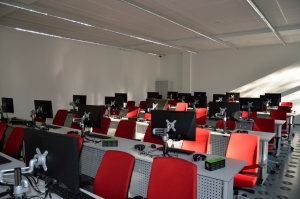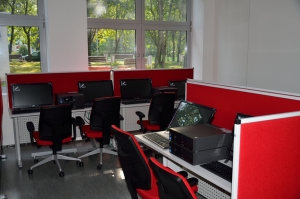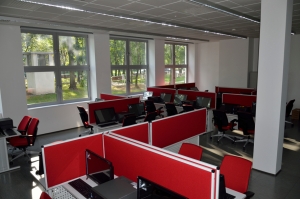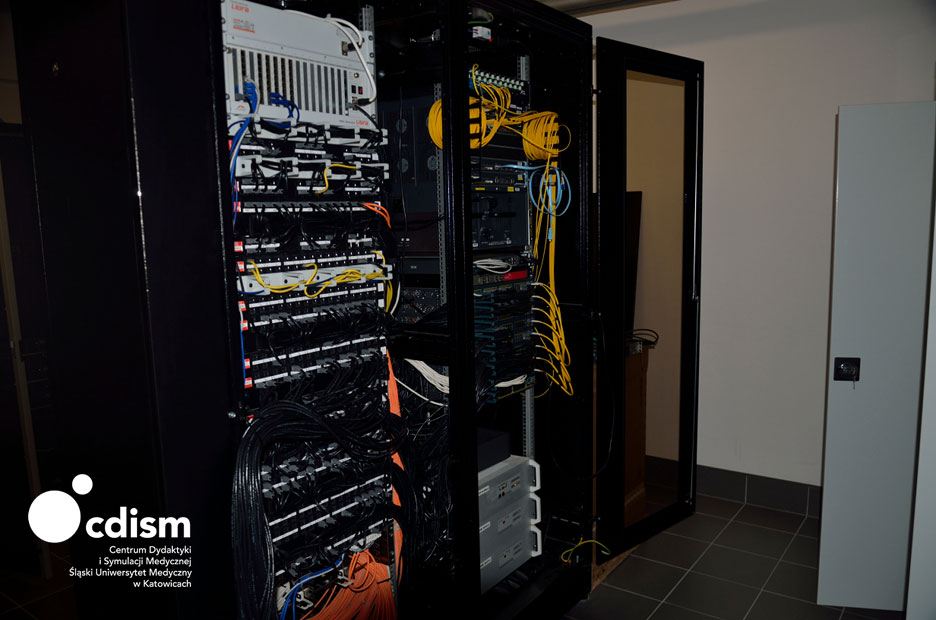
In addition to the simulation premises the center has rooms equipped with infrastructure allowing to use ICT in education:
- two multimedia lecture classrooms equipped with computers with LCD monitors using 3D display technology and multimedia projectors. Within the capabilities of workstations it is possible to access applications presenting three-dimensional images, to use traditional software and to conduct examinations. It is also possible to conduct interactive lessons using the latest information technology with simultaneous interpretation system (25 computer stations in every room)
- multimedia reading room providing access to the Internet and digital resources of SUM (40 stands)
- individual work space, where there are computers with Internet access and possibility of scanning. This room can also be used to teach classes in small groups (8 workstations), with the possibility of using a multimedia projector,
- software center, equipped with four computer stations where application software is installed, designed for students and SUM staff,
- collective work room that allows students and scientific and educational staff to do team work in the form of “brainstorming” discussion. It also allows presentations, in a small group, of interesting results using all teaching materials, literature and databases available electronically at the University. This room can also be used to teach classes for small groups (10 workstations), with the possibility of using a multimedia projector and an LCD TV.
- two auditoriums equipped with multimedia projectors, a possibility of simultaneous interpretations and the use of wireless voting system

The center also provides e-learning platform, and offers support for creating e-learning materials, it also has a video conferencing system that allows live transmission from operating and treatment rooms and two cameras (including one 3D), which enable recording of films for use during classes .
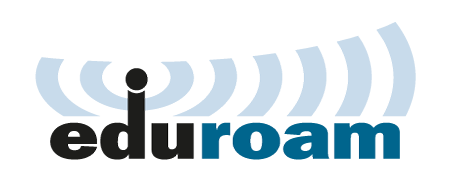
Wireless access to the Internet is ensured in the entire building. Thanks to a large number of computer stands, users of the Centre’s infrastructure have convenient access to digital resources of SUM (database of electronic journals, a large selection of open access magazines, literature databases, bibliographic databases, e-books, atlases and, finally, the catalogue of the SUM library).
The center also offers an opportunity to benefit from specialized software:
Virtual patient simulators, molecular modeling software, software for edition of particles structures and determining their molecular properties , software for learning physiology using stereoscopic visualization, statistical software, graphics software, dictionaries and text reading system.


